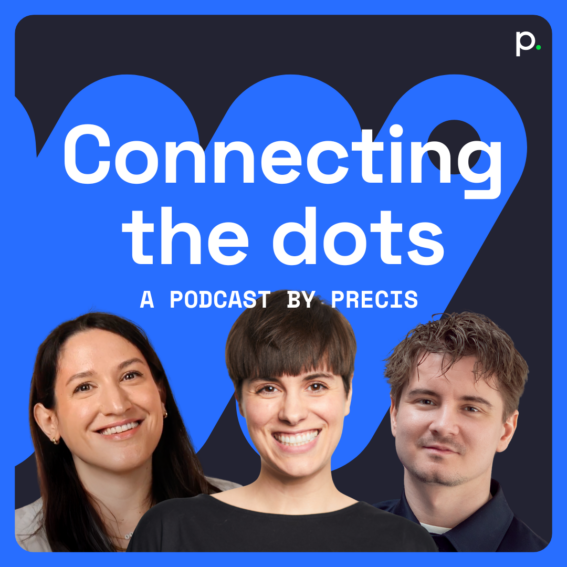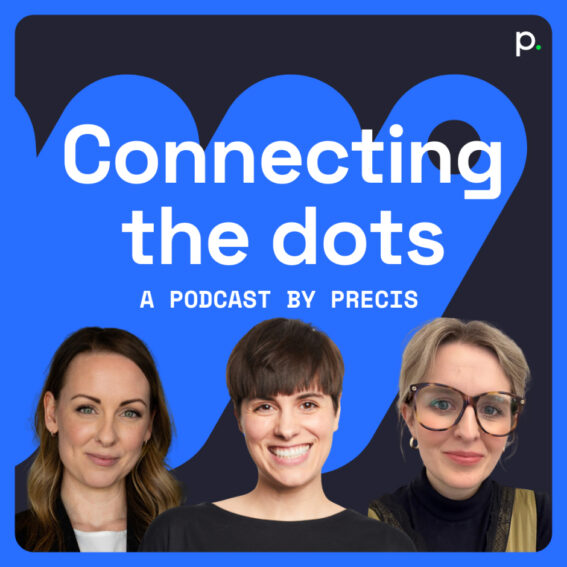How to stay visible in an AI-driven search world

Kristina Bergwall
SEO Lead
AI-driven search is changing the game of getting found online.
Google AI Overviews, ChatGPT, Perplexity, and other large language models (LLMs) are pulling insights directly from content, delivering answers with link citations. And it’s working: 71.5% of users now report using AI tools for search, with 14% using them daily.
For B2B marketers, this shift is massive. AI-generated responses are shaping buyer decisions before they even land on your website. With 1 in 10 US internet users preferring AI tools over Google for search, the way people find brands is shifting fast. If your brand isn’t being referenced, you’re losing out on traffic, leads, and authority.
The solution? Answer Engine Optimisation (AEO).
AEO is SEO for the AI era, and if you want to stay ahead, this is not a channel you should ignore. This quick guide breaks down what AEO is, how it differs from traditional SEO, and what you need to do right now to ensure AI search models reference your brand instead of your competitors’.
SEO vs. AEO – what’s the difference?
SEO (search engine optimisation): Traditional SEO focuses on ranking in Google’s search results (which has over 90% market share), by optimising pages, earning authoritative backlinks, and fixing technical inhibitors to increase organic traffic for target relevant keywords.
AEO (answer engine optimisation): AEO ensures your content is structured and authoritative enough to be pulled into AI-driven search responses, whether from Google’s AI Overviews, ChatGPT, or any other LLM-powered search engine.
SEO isn’t dead. But if you’re only optimising for Google’s search rankings, you’re missing out on where search is heading.
How search has changed (and why your strategy needs to)
What search was
Remember the days when you’d punch in a single keyword and wade through pages of results to find what you needed? Early search engines operated on basic keyword matching, which delivered a barrage of links that often required extensive sifting. Users had to adapt their queries to the limitations of the technology, leading to a less intuitive search experience.
What search is now
Fast forward to today, and the landscape has transformed dramatically. Users now pose conversational, long-tail queries, and they expect precise answers instantly. This shift is driven by advancements in AI and natural language processing that enable search engines to interpret context and intent more effectively. Moreover, younger generations are redefining search behavior by turning to social media platforms like TikTok and Instagram as primary search tools, often bypassing traditional search engines.
In response, search engines (Google especially) have moved away from simple keyword matching. Their algorithms now focus on understanding meaning, context and intent. They’re built to handle conversational queries, surface more nuanced answers and reduce the number of searches it takes to get to the right information. That changes how content needs to be written: less keyword stuffing, more clarity and relevance.
AI-powered search engines like Perplexity and ChatGPT are also gaining traction, especially in B2B, where decision-makers are turning to AI tools for research. The result is less traffic for brands that aren’t showing up in AI responses and a growing challenge for SEO teams.
At the same time, publishers are beginning to push back. Major media outlets are blocking AI scrapers or cutting deals to prevent their content from being mined for free. This tug-of-war over information could reshape how AI models access and distribute content.
What search might become
Organic traffic isn’t dead, but it’s in for a serious shake-up. AI search is becoming more personalised, and search engines won’t let go of their biggest moneymaker: ads. Expect sponsored answers, promoted AI results, and new ad formats creeping into AI-driven search experiences. That means brands will need SEO teams that don’t just react but stay ahead of the curve by tracking how AI models source information and making sure they own the answers in their industry.
The AEO playbook: how to win in AI-driven search
If you want AI to surface your content, you need to think beyond rankings. Search engines are shifting from listing results to delivering answers, and if your brand isn’t part of them, you’re invisible.
AEO is about teaching AI to recognise you as a trusted source. That means structuring your content right, expanding your digital footprint, and making sure your expertise shows up in the places AI pulls from. Here’s how to get started.
1. Expand your digital footprint
– AI prioritises authority and relevance. High-ranking sites still matter, but LLMs also pull from smaller, hyper-relevant sources. A niche blog or community forum can outrank mainstream media if it’s where your audience goes. Focus on visibility in the right places, not just the biggest ones.
- Old-school link-building won’t get you into AI-generated answers. Digital PR and omni-channel SEO should be the backbone of your strategy in order to earn mentions across trusted industry sites, podcasts, social media, and expert roundups. The more AI sees your brand consistently referenced across channels, the more likely it is to surface your content.
2. Structure content for AI-readability
– Use clear, structured headings and answer-first formatting such as short, direct responses up top, details below.
– Optimise for featured snippets, as many AI models still rely on them to surface quick answers.
– Make sure your content is accessible in raw HTML – most LLMs can’t render JavaScript, so anything loaded that way might be missed entirely.
– You can also create an llms.txt file to summarise your site and help AI models crawl the right content.
3. Build topical authority with depth and structure
– Organise your content around central themes (pillar pages) supported by detailed subtopics (cluster pages) to signal full topical coverage and relevance.
– LLMs tend to pull from content that fully explores a content, which means you should create deep, long-form content that explores subjects comprehensively rather than superficially.
– Optimise using entity-based analysis to help AI understand the context and relationships within your content.
– Make sure your internal links connect related pieces to guide both users and AI through your content structure.
4. Think like your audience (and their AI assistants)
– AI summarises content conversationally, so write how people search.
– Focus on long-tail, question-based queries (e.g., “How does AI impact B2B marketing?” instead of just “AI marketing”).
– Optimise for entity-based search – ensure your brand, products, and experts are clearly defined and referenced across the web.
5. Leverage first-party data
– AI prioritises content that users actively engage with. That means publishing ungated, high-value content – like data-driven reports, expert Q&As, and well-structured resources – that people reference, share, and link back to. The more your content is cited across the web, the more likely AI models are to pull from it.
– The more AI sees users interacting with your content, the more likely it is to surface in AI-driven answers.
6. Test, adapt, repeat
– Track whether AI-driven queries are sending traffic. Is your content being cited in AI-generated answers?
– Experiment with different content formats – videos, podcasts, structured Q&A pages all perform well in AI search.
– Stay ahead by monitoring AI search trends and adjusting your strategy. Look for tools that analyse AI-generated search results, track which sources LLMs pull from, and monitor branded mentions in AI chat responses.
Invest now, save later
SEO isn’t going away, but it’s no longer enough on its own. AI search is already reshaping how people find information, and brands that treat AEO as an afterthought will be stuck playing catch-up.
Staying ahead requires investing in the right tools – ones that help you track AI-driven search results, analyse where LLMs pull their data from, and adjust your strategy accordingly. (Tools like Alvie are already making this easier.) The sooner you start tracking, the less you’ll spend later trying to catch up.
How we approach AEO at Precis
At Precis, we see AEO as more than a trend. It’s the natural next step for any brand serious about being found – by humans as well as machines. That’s why our approach to search doesn’t stop at rankings.
We build topic-led content ecosystems, grounded in strategic keyword and entity mapping. We structure websites for clarity so that users, search engines, and AI models can find it and utilise it. And we go beyond content to ensure your brand is visible in the right spaces, from digital PR to product documentation to data-driven reports.
Whether you need help navigating the shift or want to make AEO the backbone of your future search strategy, we’re already on it.


